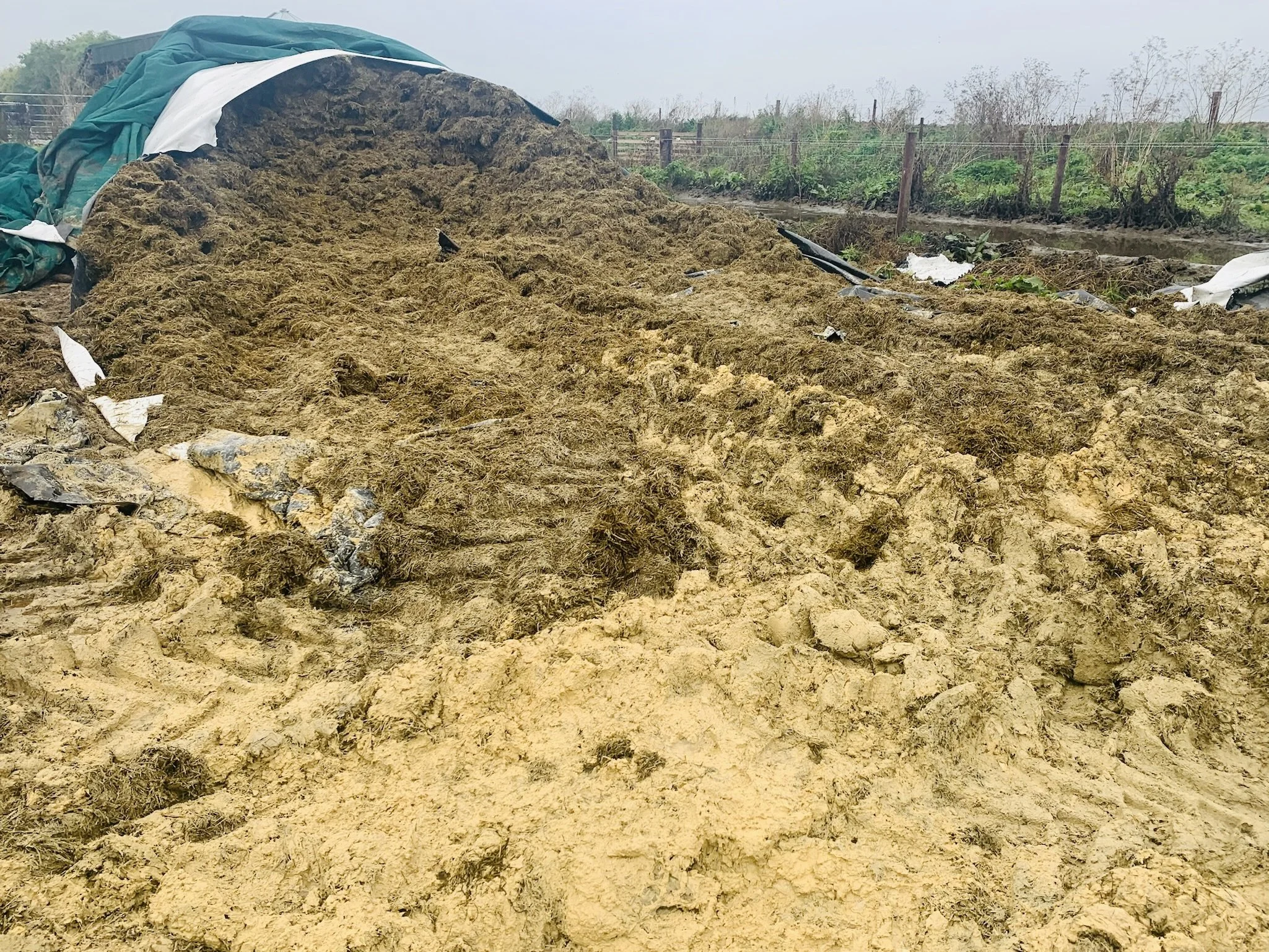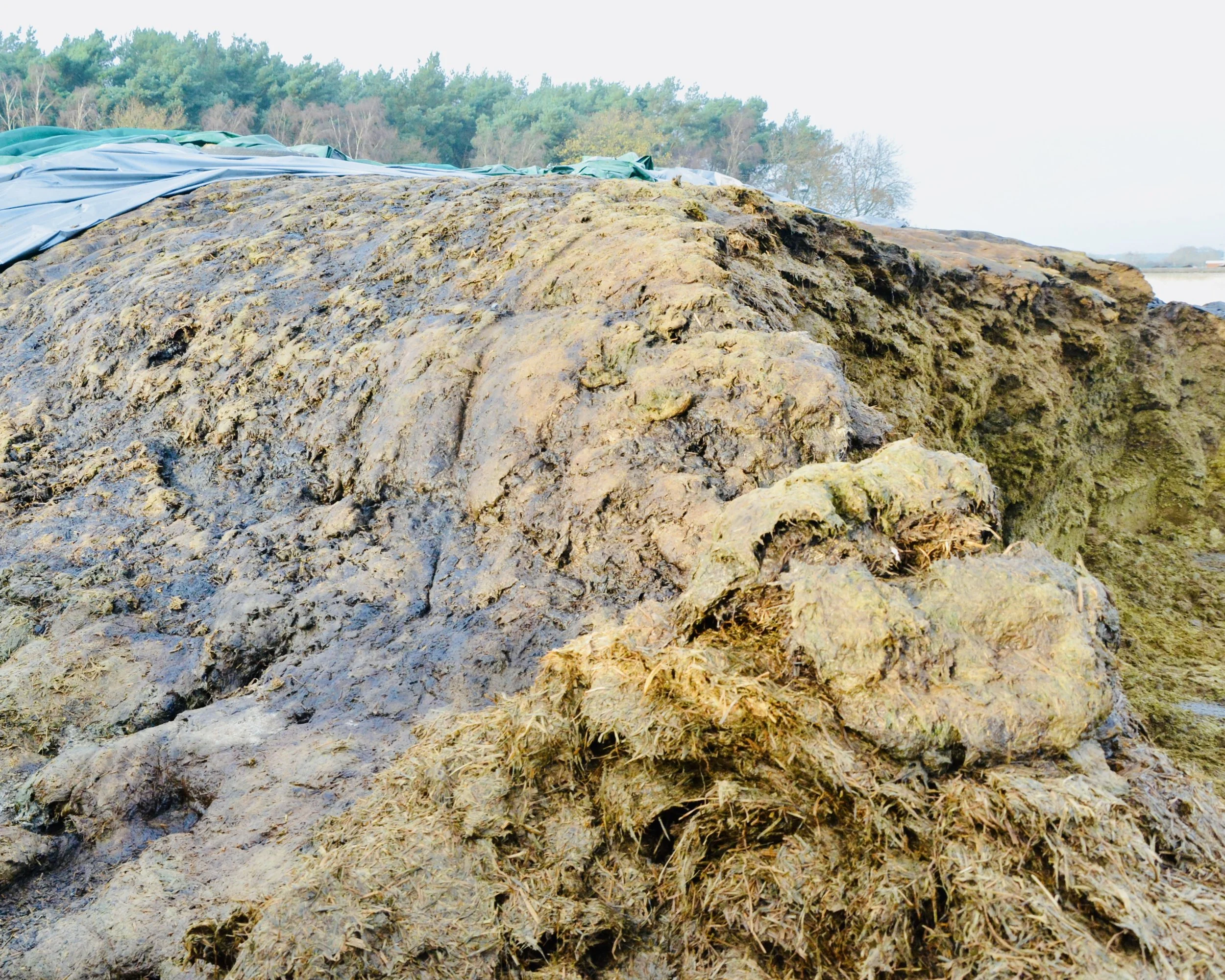Is it possible to make silage with zero losses?
I’m sure you’ve heard the claims - I hear it all the time - the claim that “my silage clamp has zero losses”. Now this is a difficult issue for me because there is a massive grey elephant in the room - you see there is no such thing as a clamp with zero losses. Unfortunately that’s just a fact of biology or chemistry or whatever. It’s just not possible to make silage with no losses. So are these farmers living a dream world or can they just not see the elephant?
Maybe you don’t need to be an optician to solve this one because I maintain that the elephant in question is, in fact, invisible. So whilst these farmers might be (rightly) proud of their silage making, they are not actually seeing the losses as they peal back the sheet.
What to expect when you roll back the sheets.
Now we all know where to look for losses when the sheets get pulled back. Those tell tale signs of black slimy silage on the shoulders of the clamp. The orange or pink tinge of mould growth on the top or the sad wet dark green of the sides and edges. The dark spots of contamination or maybe even the front door to Mr & Mrs Rats latest accommodation - your worst fears all in one maybe.
So when you roll back the sheet and the silage underneath is clean, yellow/green and fresh, you probably sigh with relief. Give it a sniff and it smells almost good enough to eat yourself. And if I’m feeling generous, this is probably what those “no loss” guys are seeing and feeling when they open the clamp. To be accurate, they are seeing a clamp with little or no waste. A silage clamp with little or zero waste is a very good thing, but it is definitely not a clamp with zero losses.
What is the difference between silage waste and losses?
We all know what waste is, it's the stuff the cows don’t get to eat. Maybe they leave it at the feed fence because they just didn't fancy it. Or maybe it's the stuff you didn’t even bother to load into the mixer wagon because you just know better than waste the time. At the AD plant, it's likely that this stuff does get into the tank, but it's of negligible feed value. Worse still it is probably going to have a negative effect on the gas production because the bacteria just can’t find anything useful to munch on.
So we all know what waste looks like, and that’s just the point because waste IS visible. The problem is that not all losses are waste and because not all losses are visible. You really should be concentrating on all the losses from the clamp, the visible losses (as waste) and the invisible losses too.
What are the invisible losses?
The invisible losses are the products of aerobic microbial activity and these really only start once the clamp is opened up. If this is happening before the clamp is un-sheeted then you have some major problems with sealing the clamp because these microbes only get active in the presence of oxygen. The microbes start to consume your silage and in exchange they give you some heat, carbon dioxide, ethanol and maybe even some weak organic acids. If this doesn’t sound like a great deal then you would be right because none of this is any use to you or your livestock.
To make matters worse, the heat has an even more detrimental effect. The little critters that are doing all the damage are unable to regulate their own temperature and in general, the warmer they are, the faster they work. So by increasing the temperature, the faster the losses will be.
How much silage are you losing though invisible losses?
In the worst conditions it’s certainly possible to lose the entire crop to visible losses. The whole lot is just waste that will never be eaten - if you have ever opened a rotten silage bale you know the feeling. Whilst this is possible, it's highly unlikely. It’s far more common for “waste” to be in the order of 1% -5% depending on how the clamp is filled and sealed. These figures aren’t too scary but they are also just the tip of the iceberg.
When it comes to the invisible losses, it's difficult to predict the scale of the loss. However it is certainly possible to measure the scale of invisible losses with a weigh bridge and some silage analysis. The scale of these losses can be anywhere between 5% and 40% of the silage feed value.
Now just imagine for a moment that you came out one morning to feed the girls and found 10% or 25% of your silage had been stolen in the night. Or imagine your contractors silaging bill was 10% or 25% less that it actually is…. Or that you could feed 10% to 25% more cows from the same land, with the same costs. You get the message - these are big numbers that can make a big difference to the financial position of your business.
So what should I do about silage losses?
The important thing is to be aware of the problem. Visible losses or waste might be under control but these are only part of the picture. Once you understand that losses aren’t just waste but that waste is just visible losses, then you can begin to concentrate on the bigger picture. To minimise invisible losses you need to get all the details right. Dry matter, chop length, consolidation and sealing at the harvest end of the season; then opening just enough face, working through the silage fast enough and using a good shear grab during feed out.
Now if you are trying to do all the above in a clamp that’s the wrong shape, then you are bound to fail because the single biggest factor in minimising invisible losses is probably the clamp shape. Get this right and you have a fighting chance. Build (or inherit) a clamp that is too wide and you are never going to keep these losses under control because the silage is exposed to oxygen for just too long.
You also need to keep this all under review too because as the world changes and your farming evolves then you maybe need to look back at the silage clamps and check that they are designed to minimise the losses. What was optimal in the past can become a problem as the way you make and feed silage changes.
If you want to discuss how to minimise waste and losses from your silage or would like to discuss any other aspects covered in this series, contact me at jeremy@silageconsultant.co.uk


